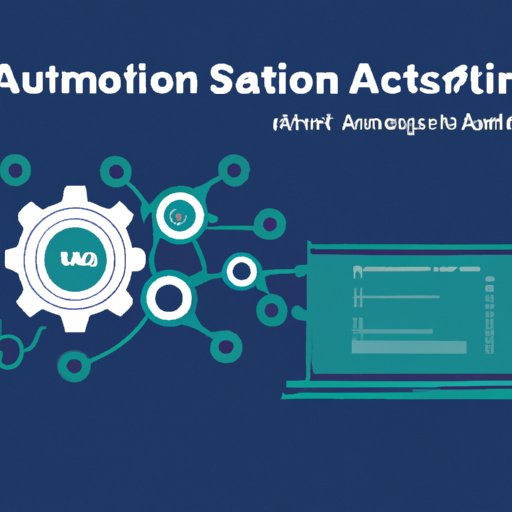Introduction
Automation is the process of using technology or software to perform tedious or repetitive tasks that would otherwise require human input. From customer service tasks to data entry, automation can be used to save time and resources while improving accuracy and efficiency. In this article, we’ll explore how automation can be used to automate the boring stuff, highlighting different automation tools and software, potential risks and limitations, and steps you can take to get started with automation.
Different Automation Tools and Software
There are a variety of different automation tools and software available, ranging from free open-source programs to more advanced commercial solutions. Popular automation tools include robotic process automation (RPA), artificial intelligence (AI) and machine learning (ML). These tools can be used to automate a variety of tasks, including customer service, data entry, document processing, and business process management. Here are a few examples of automated processes in action:
- Data Entry – Automated data entry can help reduce manual errors and save time by quickly entering large amounts of data into a system.
- Customer Service – AI-powered chatbots can respond to customer inquiries faster than humans, reducing wait times and improving customer experience.
- Document Processing – Automation can be used to scan documents, extract key information, and route them to the appropriate personnel for further processing.
Challenges of Automation
While automation can offer a number of benefits, there are also potential risks and limitations that should be taken into consideration. Automation is not without its challenges, and it’s important to understand these before implementing any automated processes. For example, automation can lead to job displacement if roles become redundant, and it can be difficult to scale up or down depending on the workload. Additionally, automation is only as good as the data it’s fed, so it’s important to ensure the quality and accuracy of the data being used.
In order to successfully implement automation, it’s important to understand the potential risks and limitations and to develop best practices for automation. Here are some tips and best practices for automation:
- Start small – Don’t try to automate everything at once; start with smaller tasks and work your way up.
- Focus on quality – Automation is only as good as the data it’s fed, so focus on ensuring the quality and accuracy of the data.
- Test and measure – Test automation processes to ensure they are working correctly and measure the results to identify areas for improvement.
- Plan for failure – Have a plan in place for when things go wrong, such as a backup system or manual override.
Getting Started with Automation
Now that you have an understanding of the benefits and challenges of automation, you’re ready to get started. The first step is to identify which tasks to automate and which tools or software to use. You should also consider the potential risks and limitations and develop best practices for automation. Once you have identified the tasks to automate and the corresponding tools or software, you can begin the process of automating the boring stuff.
To help you get started, here are some steps to take:
- Analyze existing processes – Take a look at existing processes and identify areas where automation could be beneficial.
- Select automation tools – Research automation tools and software and select the ones that best suit your needs.
- Set up automation – Implement the automation tools and set up the automated processes.
- Monitor performance – Monitor performance to ensure the automated processes are working correctly and identify areas for improvement.
If you’re looking to learn more about automation, there are a variety of resources available. These include books, blogs, online courses, and tutorials. Additionally, many automation tools and software providers offer support and guidance on how to get started.
Conclusion
Automation has the potential to make tedious and repetitive tasks easier, saving time and resources while improving accuracy and efficiency. While there are a number of benefits to automation, it’s important to understand the potential risks and limitations and to develop best practices for automation. By following the steps outlined above and taking advantage of the various resources available, you can get started on automating the boring stuff.
(Note: Is this article not meeting your expectations? Do you have knowledge or insights to share? Unlock new opportunities and expand your reach by joining our authors team. Click Registration to join us and share your expertise with our readers.)
